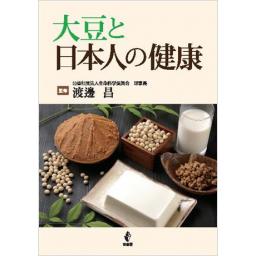1) Haba R, Watanabe S, Arai Y, Chiba H, Miura T. Suppression of lipid-hydroperoxide and DNA-adduct formation by isoflavone-containing soy hypocotyl tea in rats. Environ Health Prev Med. 2002 ; 7 (2) : 64-73.
2) Haba R, Watanabe S, Wada M, Udaka S. Effects of lactoferrin, soya germ and polyamine on 2-amino-1-methyl-6-phenylimidazo [4,5-b] -pyridine (PhIP) -induced breast carcinogenesis in rats. Biofactors. 2004 ; 22 (1-4) : 127-131.
3) Messina M, Barnes S. The role of soy products in reducing risk of cancer. J Natl Cancer Inst. 1991 ; 83 : 541-546.
4) Messina M, McCaskill-Stevens W, Lampe JW. Addressing the soy and breast cancer relationship : review, commentary, and workshop proceedings. J Natl Cancer Inst. 2006 ; 98 : 1275-1284.
5) Ohsumi S, Sakamoto G, Takashima S, et al. Long-term results of breast-conserving treatment for early-stage breast cancer in Japanese women from multicenter investigation. Jpn J Clin Oncol. 2003 ; 33 : 61-67.
6) Helferich WG, Andrade JE, Hoagland MS. Phytoestrogens and breast cancer : a complex story. Inflammopharmacology. 2008 ; 16 : 219-226.
7) Yamamoto S, Sobue T, Kobayashi M, et al. Soy, isofavones, and breast cancer risk in Japan. J Natl Cancer Inst. 2003 ; 95 : 906-913.
8) Zhang C, Li JP, Zhou P. Soy consumption and breast cancer risk : four recent meta-analyses. Breast Cancer Res Treat. 2011 ; 127 : 573-576.
9) Shu XO, Zheng Y, Cai H, et al. Soy food intake and breast cancer survival. JAMA. 2009 ; 302 (22) : 2437-2443.
10) Doyle C, Kushi LH, Byers T, et al. Nutrition and physical activity during and after cancer treatment : an American cancer society guide for informed choices. CA Cancer J Clin. 2006 ; 56 : 323-353.
11) Messina M, Watanabe S, Setchell KD. Report on the 8th International Symposium on the Role of Soy in Health Promotion and Chronic Disease Prevention and Treatment. J Nutr. 2009 ; 139 (4) : 796S-802S.
12) Maskarinec G, Verheus M, Steinberg FM, et al. Various doses of soy isoflavones do not modify mammographic density in postmenopausal women. J Nutr. 2009 ; 139 : 981-986.
13) Huber J, Imhof M, Schmidt M. Effects of soy protein and isoflavones on circulating hormone concentrations in pre- and post-menopausal women : a systematic review and meta-analysis. Hum Reprod Update. 2010 ; 16 (1) : 110-111
14) Watanabe S, Uesugi S, Zhuo X, Kimira M. Phytoestrogen and cancer prevention. Gan To Kagaku Ryoho. 2003 ; 30 (7) : 902-908.
15) Weihua Z, Lathe R, Warner M, et al. An endocrine pathway in the prostate, ERbeta, AR, 5alpha-androstane-3beta, 17beta-diol, and CYP7B1, regulates prostate growth. Proc Natl Acad Sci USA. 2002 ; 99 : 13589-13594.
16) Muthyala RS, Ju YH, Sheng S, et al. Equol, a natural estrogenic metabolite from soy isoflavones : convenient preparation and resolution of R- and S-equols and their differing binding and biological activity through estrogen receptors alpha and beta. Bioorg Med Chem. 2004 ; 12 : 1559-1567.
17) Lund TD, Munson DJ, Haldy ME, et al. Equol is a novel anti-androgen that inhibits prostate growth and hormone feedback. Biol Reprod. 2004 ; 70 : 1188-1195.
18) Miyanaga N, Akaza H, Hinotsu S, et al. Prostate cancer chemoprevention study : an investigative randomized control study using purified isoflavones in men with rising prostate-specific antigen. Cancer Sci. 2012 ; 103 (1) : 125-130.
19) Messina M. Soybean isoflavone exposure does not have feminizing effects on men : a critical examination of the clinical evidence. Fertil Steril. 2010 ; 93 : 2095-2104.
20) Cederroth CR, Auger J, Zimmermann C, et al. Soy, phyto-oestrogens and male reproductive function : a review. Int J Androl. 2010 Apr ; 33 (2) : 304-316.
21) 陳瑞東, 大豆イソフラボンの発がん抑制, 於 : 家森幸男, 渡邊昌編, 大豆イソフラボン. 東京 : 幸書房 2001 ; 107-125.
